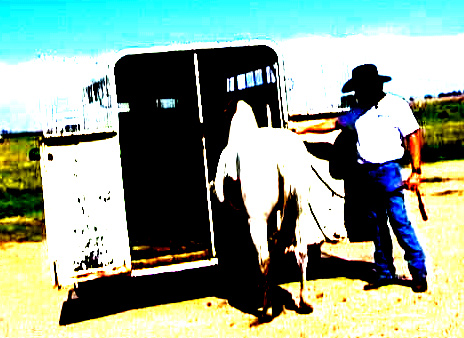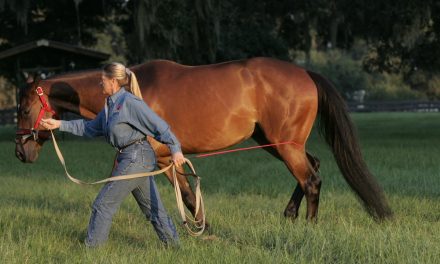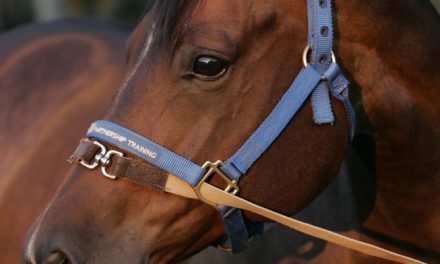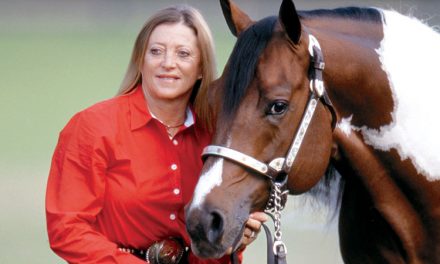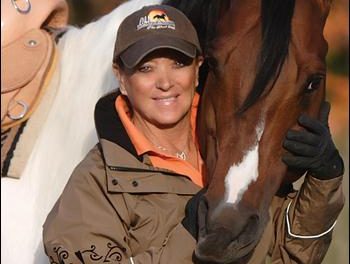Palm Partnership Training™
Building a Partnership with Your Horse
 Trailering is a big step. Not only are we dealing with loading our horse into a trailer, we will be driving and maneuvering a large vehicle (like a truck or SUV) and towing our precious cargo behind. Once trailering is mastered, it opens up many new opportunities for fun with our horses. We have the freedom to go to shows, trailer to a friend’s house to trail ride, and have the mobility to take our horse with us almost anywhere!
Trailering is a big step. Not only are we dealing with loading our horse into a trailer, we will be driving and maneuvering a large vehicle (like a truck or SUV) and towing our precious cargo behind. Once trailering is mastered, it opens up many new opportunities for fun with our horses. We have the freedom to go to shows, trailer to a friend’s house to trail ride, and have the mobility to take our horse with us almost anywhere!
I want to point out some important trailer safety tips and while driving. This is not an exhaustive list of safety considerations, but ones that I want to share with you based on my experience.
How and where a horse is tied in the trailer is an important safety issue. It isn’t necessary to always tie a horse in the trailer. Rather than tying a youngster or green horse I often just loop the lead line through the hay bag. This gives the horse the feeling of being tied, without the constraint of really being tied. Young or green horses can be startled when they are first learning to stand and ride in the trailer. If they are tied, they may pull back and react in fear at being restrained. We want this experience to be stress free for our horse. Only when I am sure that a youngster or green horse is comfortable with trailering, will I tie him.
I like to tie my horses to the trailer tie ring that is above the chest bar and just above his head. Tying there does not create a lot of excess lead line between the horse and the point where he is tied. Every trailer is different, but select a tying point that is secure, above your horse’s head, and as close as possible to him.
Tie your horse with enough slack in the lead line so that he if he would be startled and back up, he has enough freedom of movement to touch the butt bar with his rump. This will give him security and a place to balance himself against while the trailer is moving.
I use a lead line to tie my horses. It allows me to vary the tying length between different sized horses I am hauling. I have found the best way to tie is using a quick release knot with the end of the lead looped through it. Many people like breakaway trailer ties. I do not have a problem with them as long as the horse can keep his head in a natural position and they are not too short or constricting. If you are using them make sure they are long enough to let your horse have enough freedom of movement that he can touch the butt bar.
Make sure that your vehicle and trailer are road ready before leaving on a trip. The vehicle should be rated to pull the weight of both horse and trailer. Check all tires to make sure they are properly inflated and that wheel lug nuts (the bolts that hold the wheel on the axle) are tight. Be sure that you are using the proper size trailer ball. Some trailer hitches require a larger ball than others. The correct size should be indicated on the trailer. Make sure the trailer hitch is correctly coupled with safety locking device engaged.
Hook the trailer’s safety chains in a criss-cross fashion to the vehicle. There should be enough slack in them to allow the trailer to turn without binding them, but they should not drag on the ground. Plug in the trailer lights and electric safety brake harness (if the trailer is equipped with one). If you are using electric safety brakes, make sure that you have set them properly for the trailer’s loaded weight and road conditions.
Check that the trailer’s brake lights and turn signals are working. Latch all doors and windows so that they won’t swing open while underway. Make sure all gear inside the trailer is secure so it cannot fly around in case of a sudden stop or turn. I also like to carry a trailer emergency kit with me. Emergency items include flares, flashlight, tire changing equipment, a can of “fix-a-flat”, wheel blocks, fire extinguisher, a set of tools, and extra fuses. Make it a habit to take one last walk around your truck and trailer to inspect it for safety before departing.
Driving a vehicle with a horse trailer behind is much different than driving a passenger car. The entire unit is at least twice as long and often twice as heavy! Here are some good driving tips I’ve learned from years of hauling my show horses across the United States.
The weight of a truck with a horse trailer behind it requires a much greater stopping distance. Look further ahead down the road and anticipate when you may have to brake. This gives you time to brake gradually and slowly. Slow changes in speed and direction help your horse keep his balance in the trailer.
Accelerate slowly. Slow acceleration also makes it easier for your horse to keep his balance and from being slammed backward against the butt bar. It also is much kinder on your vehicle’s transmission.
Two road conditions create the most difficulty for the horse to maintain his balance in a trailer. They are turns or curves and going downhill to a curve. Here’s how to safely handle both situations.
Always turn your rig slowly. After proceeding through an intersection or turn, let the trailer straighten out before accelerating. Too many drivers forget that the trailer is behind them and accelerate through the turn, curve, or bend in road. This “whips” the trailer, and their horse, around the corner.
On highways, curves are usually “banked” meaning the outside edge of the curve is higher than the inside edge. Drive toward the “high” or outer side of a curve. This allows the horse to balance himself better. Some older roadways do not have banked curves. When encountering this situation, you need to be more cautious. Slow down and cover the brake with your foot. Be ready to regulate speed to balance your rig using the brake or coast until you have passed through the middle of the curve before accelerating.
The hardest situation for the horse to balance through is a curve after a downhill. Here the “live” weight of the horse and the trailer moving downhill will push you into the curve. It is easy to build up too much speed to safely negotiate the turn. To be safe, as you crest a hill, assess how steep it is and if there is a curve at the bottom. Take your foot off the accelerator, cover the brake, and coast. The trailer’s weight will push you down hill. Minimize any acceleration by either braking or coasting until you are safely into the curve. Once you feel that the weight of the trailer passing through the curve, slowly accelerate. This will give your horse his best chance to safely balance in the center of the trailer stall.
Practice driving your trailer before taking your horse for a ride. Good trailer driving skills means a safer, less stressful experience for you and your horse. He’ll learn to love the trailer, not to fight it. You’ll have the freedom of going almost anywhere with him and the satisfaction that you are doing it together safely.
Backing Tips…
Backing up a trailer does not have to be a confusing, intimidating situation. Here is my best tip for trouble free backing. Try this simple procedure and I guarantee that you’ll be able to back your trailer from now on!
- When you are ready to back your trailer, place one hand (either hand will work, but I prefer my left so I can look over my right shoulder when backing) on the bottom of your steering wheel.
- Whichever way you want the tail end of your trailer to go, move your hand and the steering wheel in that direction. For example, if you want to back the end of your trailer to the right, with your hand on the bottom of the steering wheel, and rotate the steering wheel to the right. The end of the trailer will go in that direction.
That’s all there is to it! Watch how the trailer is reacting using your mirrors or looking over your shoulder. Just make sure you do not turn so sharply that you jack-knife the trailer so that it gets pinched in a 90-degree angle with the truck. If you get in that situation, just pull forward and straighten the truck and trailer, and try again.
Knowing how to back up a trailer takes a lot of stress out of trailering and gives you greater freedom to do more with your horse!
Your Next Step…
This newsletter ends our series in tips for trouble free trailer loading. I hope that you’ve gotten some practice lesson plans and advice you can use. Let’s review the most important points to remember for teaching your horse stress free trailer loading:
- Do not introduce trailer loading until your horse understands and demonstrates he is consistent with the basic ground training commands of “come to me”, “move away from me”, “whoa” or stop, and “back” when asked for them in a stall.
- Have all the tools you need to teach trailer loading on hand before starting.
- Open up all trailer doors and windows to make it a bright, inviting place. Have some “trailer bait”, like a full hay bag, inside.
- If possible, have an experienced, schoolmaster type horse loaded in the trailer to give the first time loader more confidence.
- Start in a confined area, like a fenced pasture. Repeat loading and unloading next to a fence for greater security until you get consistent responses. Then move away from the fence, but continue practicing still in the enclosed area. Only when your horse shows he accepts this step, should you try loading him in a more open environment.
- Never pull on the lead to muscle your horse into position or into the trailer. If you need to exert tension, release it the moment your horse comes forward. If you are working alone, use the “longe loop”, around his hip, that I taught you how to make. Or ask a friend to help you, as I described in this series.
- Practice trailer loading regularly, especially if you are not hauling regularly. Be consistent in the procedures each time you load and unload your horse.
- Unload your horse SLOWLY. Teach him to unload even slower than you taught him to load.
- Be a safe, considerate driver—for both you and your horse’s sake.
- My best advice: Avoid last minute frustrations…if you have plans to go somewhere, work on trailer training your horse many weeks prior to the departure date. Be prepared and do your homework before your trailer adventure.
- Above all… take your time and be patient. Getting frustrated only makes you and your horse stressed and less likely to achieve success.
May all of your travels with your horse be safe and happy ones! Until then, follow your dreams…

